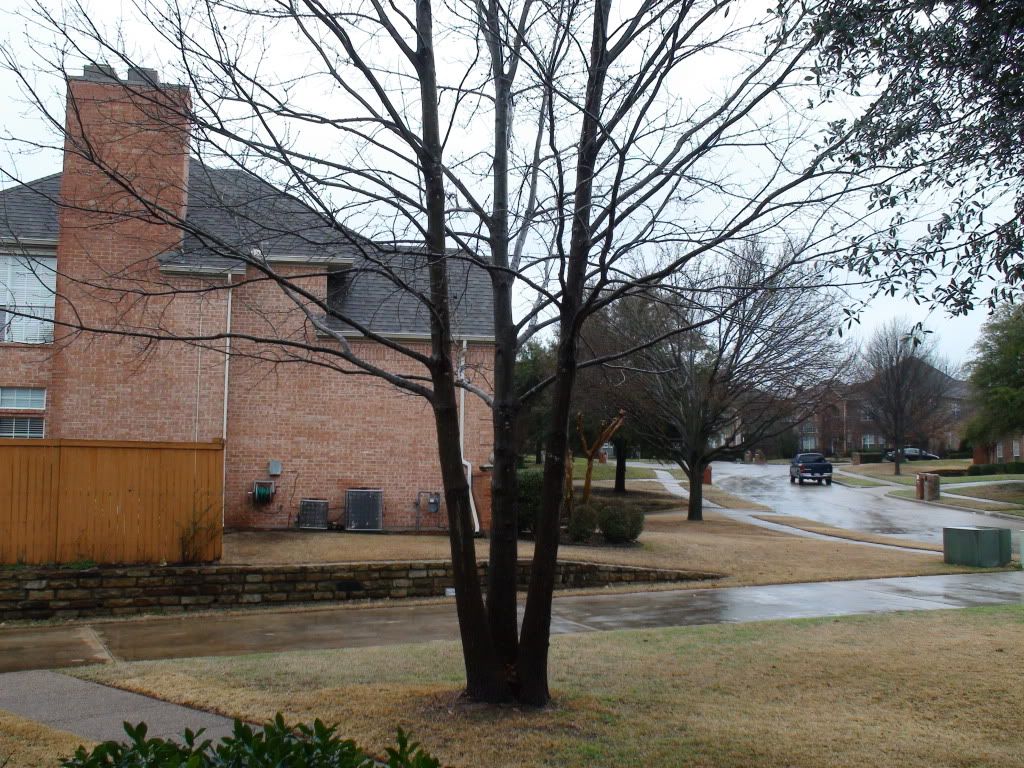Ohh! I see this is over here now. ddh if you are going to bring up the argument than argue your case. Don't wait for your guys to bail you out.
That tree is young and still growing if you steal cable it now then it will have to be recabled ten years down the road as it get taller. Dynamic cabling would allow it the freedom to grow and would do less injury to the tree.
I have already argued my case. To me, the most important factor in this tree(s) is the junction at the base. There is no avoiding included bark. If it's not there now, it will be soon enough, and the only thing that will prevent it is a chainsaw.
It makes no difference if static or dynamic is used from a maintenance standpoint. Both will have to be checked on and replaced as necessary.
I don't see removing 2 leads as a good option, the homeowner will be left with a leaning tree bereft of 2/3 of it's wind support, with 2 large wounds at its base.
Originally Posted by NCTREE
I disagree, those trunks are in a triangular pattern not a straight line where the center lead is pushing out on the other two trunks. If there is included bark then steal cabling is not going do anymore than dynamic cabling will do.
Trees build up tension wood from forces exerted on them from an outside source just as a gymnast builds muscle strength from lifting weights. Steal cabling restricts tension wood dynamic cabling encourages it. Trees in a forest work in uniform with each other moving from side to side as they bounce off other trees. The same concept happens with the branches of individual trees. Trees should just simply me allowed to move with the forces exert on them.
One last thing as the trunk calipers increase in diameter outwards so does the strength. As long as there is no defects in the trunks like rot or girdling roots then they should do fine.
I'm fully aware that they are in a triangle pattern. There is (or will be) included bark. Static cabling will do much more than dynamic cabling as this tree matures. Granted, it's small enough now that dynamic could be beneficial for a time, but at some point static will be necessary to support the growing leads and included bark junction.
Steal cabling restricts tension wood dynamic cabling encourages it.
So the tree knows it's now carrying steel, and no longer produces reaction wood? I don't think so.
Adding the steel cable will change the location that the tree adds reaction wood, it won't keep the tree from adding reaction wood. By making the three tops behave as one, the tree will begin adding reaction wood to support it's new dynamic (the whole tree) instead of adding reaction wood to support three faulted junctions.
Trees in a forest work in uniform with each other moving from side to side as they bounce off other trees.
:bang:
These trees aren't in a forest. They don't have the same dynamics of trees that are, and they're faulted at the base. Better to leave the forest dynamic in the forest.
Trees should just simply me allowed to move with the forces exert on them.
I agree, except when they've got multiple faults and targets aplenty. This tree has multiple faults and targets aplenty, and we DO NOT want those faults to be flopping about in the wind. That means static cabling.
One last thing as the trunk calipers increase in diameter outwards so does the strength. As long as there is no defects in the trunks like rot or girdling roots then they should do fine.
Again, :bang:
The trunks will not only increase in diameter in an outward direction. I don't know if you've noticed or not, but the growth rings go all the way around the stem. So as they're getting stronger with diameter, they're also exerting outward force from the inward growth. They're also supporting more weight, because the whole tree is getting bigger, not just the trunk, so that "added strength" is already being used to support more tree. And there are multiple faults in the trunk....included bark. Have you EVER seen a codominant with an included bark junction fail? That never happens...




























































